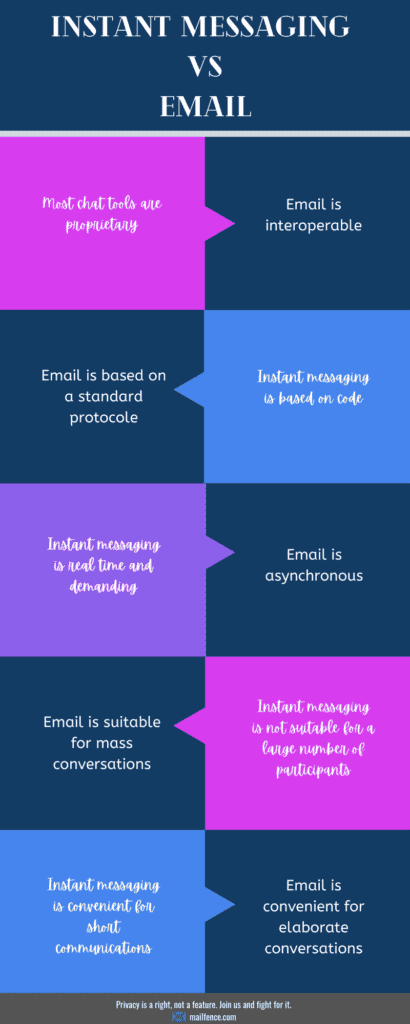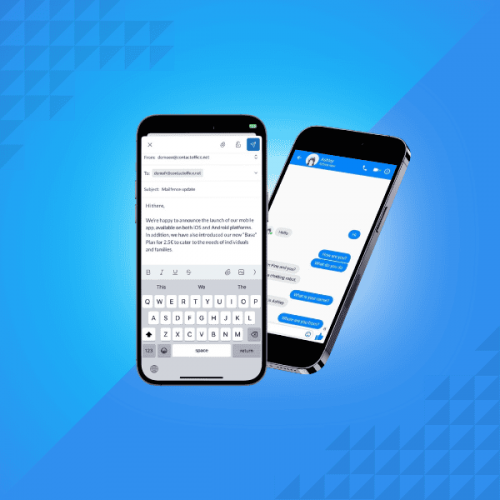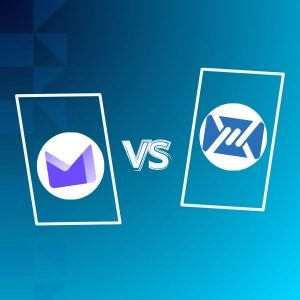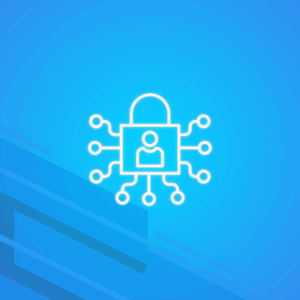Obsolete, outdated, and even “dead”: with the rise of instant messaging applications, many media are predicting the demise of email. Email is considered time-consuming and stressful and is no longer part of the daily life of the younger generation.
But is this really true? Are we witnessing the extinction of email?
To help you make up your own mind, we looked into what distinguishes instant messaging from email, and came up with 5 key differences telling us email is here to stay.
The 5 major differences between email and chat
1. Email is interoperable, most chat tools are proprietary
Email is interoperable, which means that two people using 2 different email providers can still exchange emails. However, this is not always possible with instant messaging, since most chat tools are proprietary. You can’t chat via Messenger with a Facebook user if you don’t have an account on this social network yourself. Moreover, instant messaging tools might request you to obtain consent from the person you want to contact before you can actually contact them.
The interoperability of email makes it a much more open communication tool than instant messaging. This openness also has certain disadvantages. Nowadays, our inboxes are overflowing with unwanted messages. It is sometimes difficult to identify the most important messages.
At the same time, email is becoming an increasingly popular communication tool for companies looking to build brand loyalty. Emailing is a fast-growing marketing tool. Studies show that consumers aren’t hostile to it. Indeed, many email solutions offer tools to discard unsolicited newsletters as soon as they arrive.
2. Email is based on a standard protocol and chat on a proprietary protocol
E-mail, launched in the 1970s, is a medium based on a protocol, i.e. a technical standard that all editors of messaging solutions must respect when programming. This protocol ensures email’s interoperability, as we have just explained.
Nevertheless, even though it has a long usage history, the protocol on which it is built has not evolved that much in recent years. By contrast, the oldest chat application, Slack, was only created in 2013. It has therefore been able to benefit from more recent technologies.
This difference has a straightforward consequence: instant messaging solutions editors have more freedom when programming them, they do not need to take account of the evolution of the standard protocol.
They can provide unique features. This includes read status, to know a message has been read, and notifications, to know a message has been received.
Chat applications very often enable you to take and send videos and audio recordings. By contrast, email does not allow this possibility. If you want to send an image by mail, you will have to send it as an attachment.
3. Email is asynchronous whereas chat is real-time
Chat is more like a face-to-face conversation, while email is more like a written correspondence.
Chat applications are relevant for spontaneous conversations. When someone sends a message, one expects an answer immediately. So conversations flow faster, which leads to more timely information and decisions.
The pace of email is slower, correspondents do not necessarily reply instantly. Conversations, therefore, take longer, and most of the time, messages are more thoughtful.
Each email provider has his own server. Therefore, an email sent from one user to another will generally have to go from one server to another. On the opposite, instant messaging works with one central server, when you send a message to another user, the message arrives immediately.

4. Email is suitable for mass conversations, chat restricts the number of participants
Email is especially convenient for mass communication. You can create groups of recipients and send a message to a very large number of people in one go.
On the contrary, instant messaging is not very suitable for mass communication. Again, chat often requires that all participants hold an account with the application provider and might ask for consent before messaging.
Furthermore, email gives structure to multi-party conversations. It is very easy to add new recipients or to remove them, even during a conversation that is already engaged. Moreover, it is possible to reply to a message while keeping track of what has been written previously.
On the contrary, chat applications are prone to the proliferation of spontaneous and anarchic conversations, and to a plethora of conversation threads. As a result, it is sometimes difficult to follow a particular topic or message. A chat chain with too many participants therefore easily leads to confusion.
5. Email is convenient for elaborate conversations, chat for short communications
Chat is usually about shorter messages. In general, people tend to skip politeness and use a more casual language. Many instant messengers do not record conversation history. Some only do it in their paying versions.
Emails suit better longer correspondence and therefore appear more official. The archiving features of email are also very useful to keep important documents. In the same way, you can create folders to manage your emails. This is why email remains the reference tool for professional communication and for sending critical documents that you want to keep track of (tender specifications, contracts, etc.). It would seem incongruous to send them by chat.
When should you use email and when should you use chat?
From what we have just outlined, it appears that email and chat are more complementary.
The use of email is more appropriate in the following circumstances:
- When the content is long;
- When the message contains a lot of information;
- When the message is solemn or important;
- When contacting the recipient for the first time.
On the contrary, instant messaging is more relevant in these situations:
- When the message is short;
- When the message is urgent;
- When several people want to talk and/or collaborate together in real time;
- When it’s a casual chat.
Email vs chat: pros and cons
Of course, another thing that distinguishes email from instant messaging are their advantages and disadvantages.
Email pros
- Universal (everyone has an email address)
- Easy access (you can get it for free)
- Easy-to-use
- Ability to group messages (particularly useful in business communications)
- Easy archiving (you’ll always have a record of previous messages, threads and attachments)
- It is accepted as legally binding in most countries (US and EU included)
Email cons
- Email communication can be slow and chaotic (you don’t know when the recipient has viewed the message)
- Spam email can significantly decrease your productivity
- Very susceptible to malware
- Not the best choice for team engagement and collaboration
Chat pros
- Much faster (hence “instant”)
- People are already familiar with texting via SMS
- Brief, to the point and more casual
- Unlike email, people tend to reply right away
Chat cons
- It’s a proprietary system (both parties must use the same chat service)
- Can be very intrusive (hard to ignore notifications)
- No archiving
- Hard to search for old chats
Is chat the death knell of email?
There is one point where there are no differences between email and chat: Both email and chat have disadvantages.
People tend to accuse email of being a source of stress and loss of productivity at work, due to the reception of too many messages. Yet, this is overlooking the fact that instant messaging notifications can also be disruptive when they are too numerous.
Similarly, one might criticize email for being a time-consuming communication tool. Indeed, it might take too long to read long messages.
But platforms that offer chat features can also be a source of distraction: familiar, non-work-related conversations abound daily. Besides, more and more people consider the obligation of being connected and reachable at any time very intrusive. The possibility, in instant messaging, to see who is online and who is not, does not seem to help spend some time away from constant solicitations. Email and its asynchronicity might actually allow for more peace of mind.
Finally, another element brought up against email, is that email can be the gateway to cyber-attacks. This is because of the great popularity of email and its universal use. Due to the increasing use of chat applications, hackers have started to adopt them to launch their attacks as well. They usually contact their victims pretending to be someone they are not. Using a more casual media, they attempt to become emotionally close to their victim. Once a (fake) relationship is built, they can trick their victims into sending them money or credentials. Either way, one must be aware of Social Engineering.
The future is email AND chat
As we just expressed, both email and chat have pros and cons. One has to learn how to combine them to get the best out of both worlds. What distinguishes instant messaging from email is actually their respective strengths.
The future is the combination and integration of email, chat, and other communication channels to offer greater versatility. It allows you to leverage the advantages of each of them depending on the need.
You have probably already received text messages inviting you to check your email inbox to discover an email you just received. You have also received an email to obtain the necessary credentials to attend a video conference.
Email is tomorrow’s snail mail
Younger generations have more affinities with chat, but it does not mean that email’s prevalence will decline. Indeed, people still widely use email, because it offers specific features and tends to be more suitable for professional usage than chat.
Just like snail mail did before, email will tend to answer specific non-conversational needs. It maintains its status as an authoritative mode of communication even when used in conjunction with collaborative platforms that integrate chat tools, such as Slack, for example. Email will not disappear, but will simply tend to be used in more specific contexts.
More and more applications will emerge, offering various features to answer email’s flaws but never to replace it.
The optimum strategy for companies is to use a collaborative solution combining email (preferably a secure one) with a chat feature. The first one will be used to communicate with third parties outside the company, while the second one will tend to be used for efficient daily collaboration between employees.
And do you know what? This is exactly what Mailfence suite offers.
Mailfence is a private and secure email suite that integrates powerful productivity tools, including calendar management, document management, the ability to manage contacts and create groups, a secure chat feature and a secure meeting scheduler.
This suite has been designed to be THE collaboration solution for individuals and companies concerned about their privacy and security. Mailfence answers all your basic communication and collaboration needs and much more.
Interested in learning more? Contact us to open your account and start increasing your productivity while preserving your privacy now.




